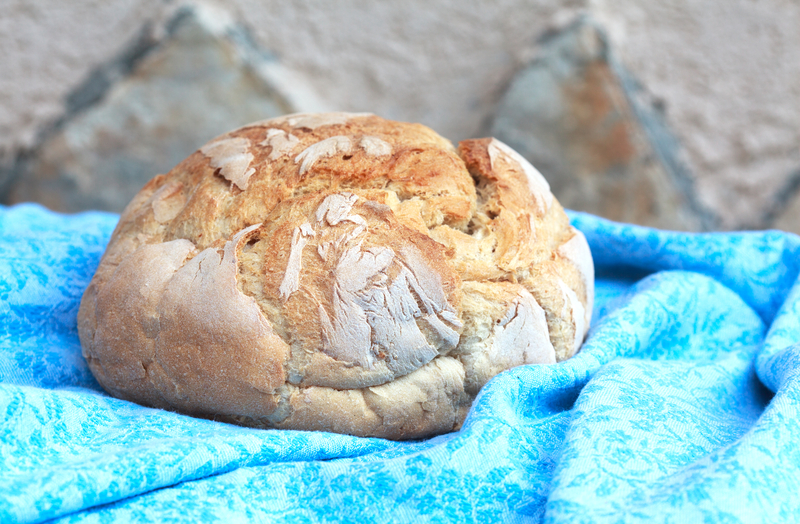 Baking bread at home is not just a culinary task; it’s a sensory experience that fills your kitchen with warmth and your home with a delightful aroma.
Baking bread at home is not just a culinary task; it’s a sensory experience that fills your kitchen with warmth and your home with a delightful aroma.
If you’ve been hesitant to try your hand at homemade bread, fear not – we’ve got a detailed, step-by-step guide to help you navigate the world of bread-making.
Whether you’re a novice or an experienced baker, follow these comprehensive steps to create a delicious loaf of bread from scratch.
Ingredients
Before embarking on your bread-making journey, gather the following ingredients:
- 3 1/4 cups all-purpose flour: The foundation of your bread.
- 1 packet (2 1/4 teaspoons) active dry yeast: The leavening agent that makes your bread rise.
- 1 1/4 cups warm water (110°F/43°C): Activates the yeast and binds the dough.
- 1 tablespoon sugar: Feeds the yeast and adds a touch of sweetness.
- 1 teaspoon salt: Enhances the flavor of your bread.
- 2 tablespoons olive oil: Adds moisture and richness to the dough.
Ensure your ingredients are fresh and of high quality for the best results.
Step 1: Activate the Yeast
 Yeast activation is a crucial step in bread-making.
Yeast activation is a crucial step in bread-making.
Follow these detailed steps:
- Combine warm water, sugar, and yeast: In a small bowl, mix warm water (around 110°F/43°C), sugar, and yeast.
- Wait for foaming: Allow the mixture to sit for 5-10 minutes until it becomes foamy. The foam indicates that the yeast is active and ready for use.
Step 2: Combine Dry Ingredients
Create a solid foundation for your dough by combining the dry ingredients:
- Prepare the flour and salt: In a large mixing bowl, combine the all-purpose flour and salt.
- Create a well: Make a well in the center of the flour mixture to accommodate the wet ingredients.
Step 3: Mix Wet and Dry Ingredients
Blend the wet and dry components to form a cohesive dough:
- Pour yeast mixture into the well: Add the activated yeast mixture and olive oil into the well.
- Incorporate the ingredients: Gradually incorporate the wet ingredients into the flour, stirring until a dough forms.
Step 4: Knead the Dough
Develop the gluten in your dough through the kneading process:
- Turn out the dough: Transfer the dough onto a floured surface.
- Knead for 8-10 minutes: Work the dough with your hands, folding and pressing, until it becomes smooth and elastic.
Step 5: First Rise
Allow your dough to rise for optimal texture and flavor:
- Place in an oiled bowl: Put the kneaded dough in a lightly oiled bowl.
- Cover and let it rise: Cover the bowl with a clean kitchen towel and let it rise in a warm place for 1-2 hours or until it doubles in size.
Step 6: Punch down and Shape
 Prepare the dough for baking:
Prepare the dough for baking:
- Punch down the risen dough: Release air bubbles by gently punching down the risen dough.
- Shape into a loaf: Form the dough into the desired shape and place it in a greased loaf pan.
Step 7: Second Rise
Allow the dough to rise again for improved texture and flavor:
- Cover and let it rise again: Cover the loaf pan with a kitchen towel and let the dough rise for an additional 30-45 minutes.
Step 8: Preheat the Oven
Get your oven ready for baking:
- Preheat to 375°F (190°C): Preheat your oven during the second rise.
Step 9: Bake
Bake your bread to perfection:
- Place in the oven: Once the dough has risen again, place the loaf pan in the preheated oven.
- Bake for 25-30 minutes: Bake until the bread is golden brown and sounds hollow when tapped on the bottom.
Step 10: Cool and Enjoy
 Complete the bread-making process:
Complete the bread-making process:
- Cool in the pan: Remove the bread from the oven and let it cool in the pan for 10 minutes.
- Transfer to a wire rack: Afterward, transfer the bread to a wire rack and let it cool completely before slicing.
Bottom Line – How to Make Bread at Home Step by Step
Baking bread at home requires time and effort, but the end result is a freshly baked masterpiece that’s well worth it.
Feel free to experiment with different flour types, add-ins, and shapes to personalize your bread to your liking.
Embarking on the journey of making bread at home is not just about the end result; it’s a holistic experience that engages your senses and fills your home with warmth.
By following these detailed steps, from activating the yeast to savoring the aroma of a freshly baked loaf, you’ve taken the first steps to becoming a home baker.
The satisfaction of creating your bread, tailored to your preferences, is a reward that transcends the kitchen.
As you experiment and perfect your technique, you’ll find joy in each slice of your homemade bread.


